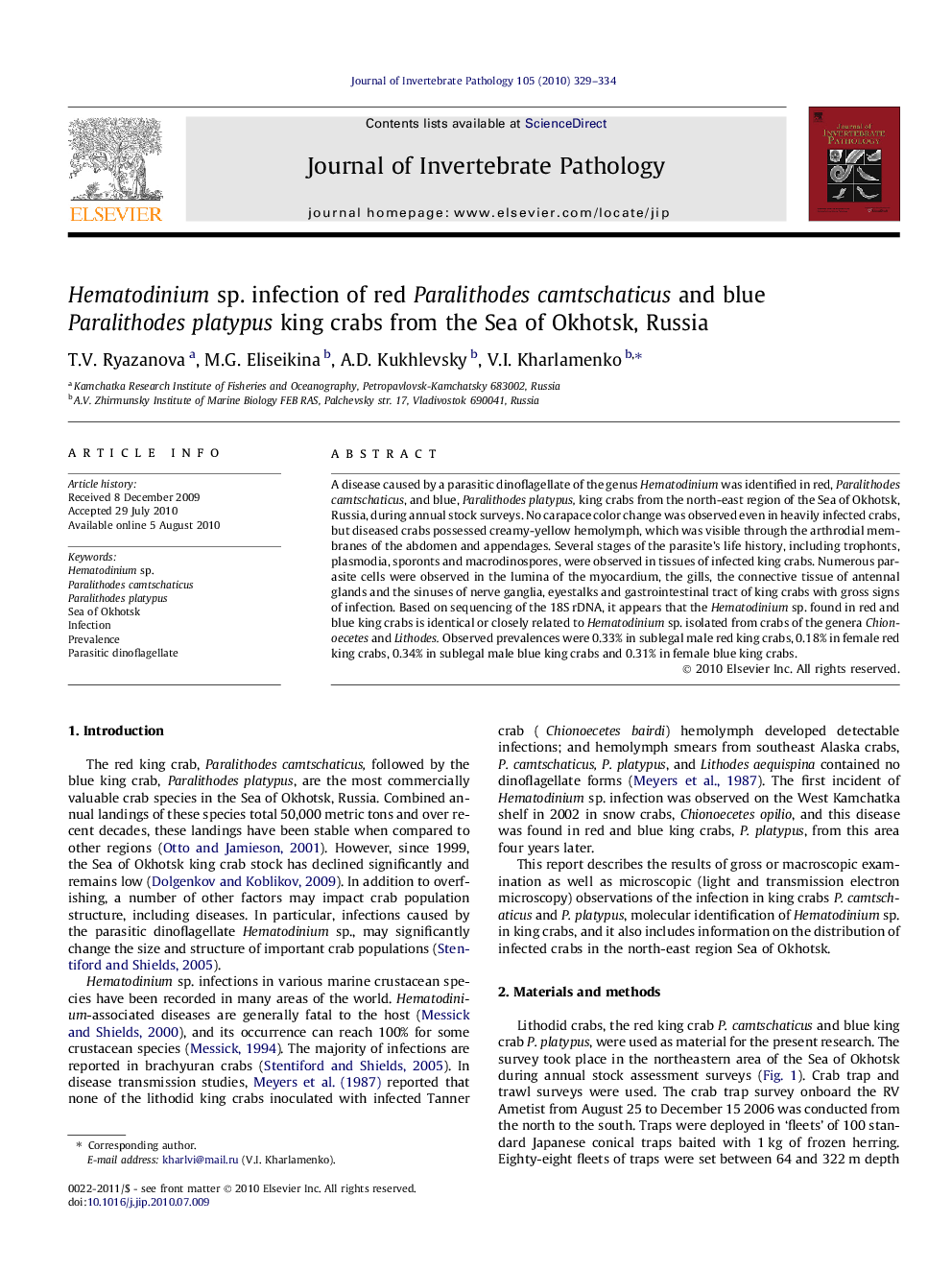| Article ID | Journal | Published Year | Pages | File Type |
|---|---|---|---|---|
| 4558177 | Journal of Invertebrate Pathology | 2010 | 6 Pages |
A disease caused by a parasitic dinoflagellate of the genus Hematodinium was identified in red, Paralithodes camtschaticus, and blue, Paralithodes platypus, king crabs from the north-east region of the Sea of Okhotsk, Russia, during annual stock surveys. No carapace color change was observed even in heavily infected crabs, but diseased crabs possessed creamy-yellow hemolymph, which was visible through the arthrodial membranes of the abdomen and appendages. Several stages of the parasite’s life history, including trophonts, plasmodia, sporonts and macrodinospores, were observed in tissues of infected king crabs. Numerous parasite cells were observed in the lumina of the myocardium, the gills, the connective tissue of antennal glands and the sinuses of nerve ganglia, eyestalks and gastrointestinal tract of king crabs with gross signs of infection. Based on sequencing of the 18S rDNA, it appears that the Hematodinium sp. found in red and blue king crabs is identical or closely related to Hematodinium sp. isolated from crabs of the genera Chionoecetes and Lithodes. Observed prevalences were 0.33% in sublegal male red king crabs, 0.18% in female red king crabs, 0.34% in sublegal male blue king crabs and 0.31% in female blue king crabs.
